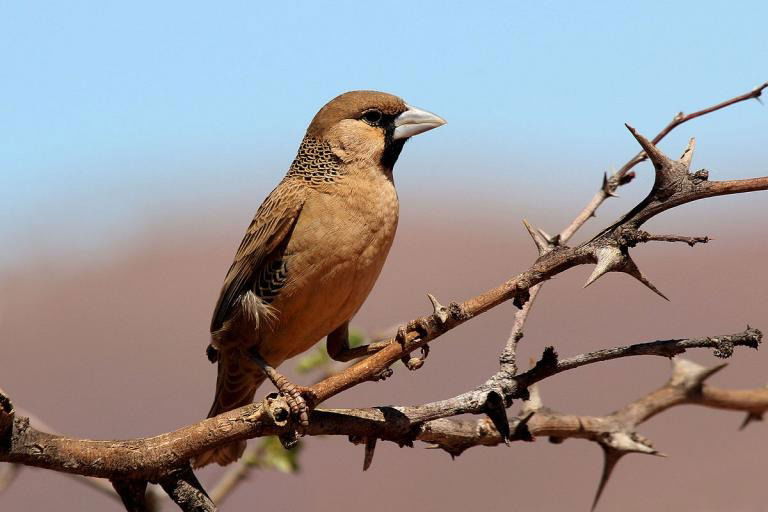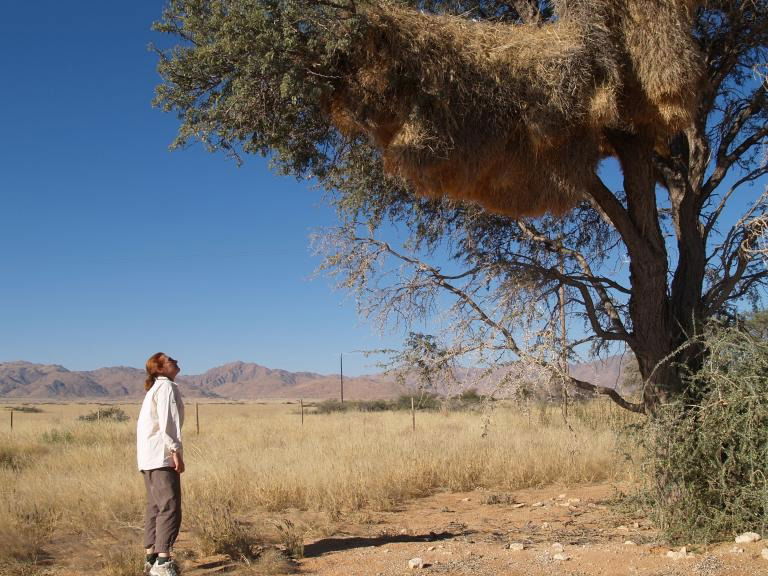
Hidden away in South Africa’s vast wilderness is a little yet bold bird called the Common Social Weaver. Its name aptly reflects the bird’s evolutionary prowess in constructing collective nest-dormitories.

The Lemurov.net team marvels at the remarkable architectural scale achieved by these birds through conscientious teamwork. Together, weaver birds construct nests that remain intact for over a century, spanning not just generations but centuries.

The construction of these multi-story dormitories involves intricate techniques, featuring rooms for different purposes.
The nests have social areas for groups of three to five birds as well as private chambers for breeding. Moreover, there are passageways with a clever snake protection mechanism installed in them.

The birds strategically attach sharp twigs to block the path of potential reptile invaders. Each nest boasts numerous false and true passages, accommodating several hundred birds simultaneously.

Some nests can reach impressive dimensions, measuring 8 meters in length, 2-2.5 meters in height, and weighing over a ton. Weaver birds have even mastered the art of building nests on power poles.

The purpose behind these elaborate structures lies in the challenging desert environment, where extreme temperature, humidity, and pressure variations pose constant threats.
Inside the nest, a stable microclimate prevails, protecting the birds from rain, dust, frost, drought, and predators. However, challenges arise when some predators breach the defenses, trapping the birds inside the labyrinthine nest.

Additionally, the choice of support for the nest can be crucial, as improper selection may lead to the collapse of the entire structure if the supporting tree breaks under its weight.
Despite these challenges, the Common Social Weaver’s architectural ingenuity remains a testament to nature’s incredible adaptations.


















